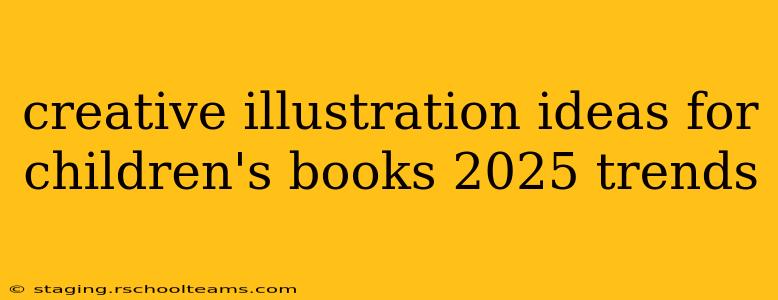Creative Illustration Ideas for Children's Books: 2025 Trends
The world of children's book illustration is constantly evolving, reflecting changes in technology, society, and artistic styles. Looking ahead to 2025, several key trends are poised to shape the landscape of creative illustration for young readers. This article explores these trends and provides concrete ideas to inspire illustrators and authors alike.
H2: Embracing Diversity and Inclusivity:
This isn't just a trend; it's a necessity. 2025 will see an even stronger emphasis on representing the diverse tapestry of human experience in children's literature. This means illustrations that showcase a wide range of ethnicities, abilities, body types, family structures, and cultural backgrounds.
H3: Beyond Stereotypes:
Avoid stereotypical representations. Instead, illustrate characters with nuanced personalities and unique features that reflect real-world diversity authentically. For example, a story about a child using a wheelchair could showcase the child's joy and resilience, not just their disability.
H3: Global Representation:
Go beyond simply including different ethnicities. Illustrate stories set in different parts of the world, showcasing diverse environments, clothing, architecture, and cultural practices. This will broaden children's understanding of the world and foster global awareness.
H2: Interactive and Augmented Reality (AR) Elements:
Technology continues to blend with traditional art forms. We can expect to see an increase in children's books incorporating interactive elements, such as:
H3: Pop-up books with a twist:
Imagine pop-up books that use AR to add animations or sounds to the pop-ups, bringing the illustrations to life in a whole new way.
H3: AR apps that enhance storytelling:
An app could overlay digital characters or environments onto the printed pages, transforming a static illustration into a dynamic experience. This could include interactive games or quizzes based on the story.
H3: Coloring books with digital overlays:
AR could allow children to color in a traditional coloring book and then see their creations come to life on a screen as animated characters or objects.
H2: Emphasis on Nature and Environmental Awareness:
With growing concern about climate change, children's books are increasingly focusing on environmental themes. Illustration styles will reflect this:
H3: Detailed and realistic nature scenes:
Illustrations will showcase the beauty and fragility of the natural world in stunning detail, inspiring a love and respect for nature.
H3: Stylized illustrations emphasizing sustainability:
Books promoting recycling and conservation could use bold, vibrant colors and stylized characters to engage younger readers.
H3: Illustrations depicting human impact on the environment:
Showcasing both the negative and positive effects of human activity on the planet can encourage children to become responsible stewards of the Earth.
H2: Unique Artistic Styles and Experimentation:
Expect to see a rise in diverse artistic styles, moving beyond traditional techniques:
H3: Digital collage and mixed media:
Blending digital painting with traditional textures and materials will create unique and visually arresting illustrations.
H3: Bold and graphic styles:
Simplified shapes and bold colors can be effective in creating engaging visuals, particularly for younger children.
H3: Abstract and surreal elements:
Subtly incorporating abstract elements or surreal imagery can stimulate children's imaginations and creativity.
H2: What are some other emerging trends in children's book illustration?
This is a question that sparks ongoing discussion within the illustration community. Some potential future trends include personalized storybooks where illustrations are tailored to specific children, increased use of animation-inspired styles, and further integration with other forms of media (e.g., podcasts, videos). The future of children's book illustration is exciting and ever-evolving, promising a richer and more diverse reading experience for young minds.
